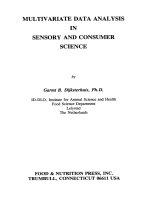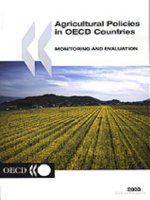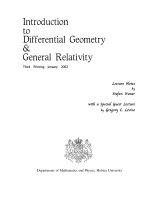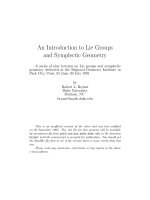Introduction surface analysis xps and aes 2003 0470847123 0470847131
Bạn đang xem bản rút gọn của tài liệu. Xem và tải ngay bản đầy đủ của tài liệu tại đây (12.09 MB, 225 trang )
An Introduction
to Surface Analysis
by XPS and AES
This page intentionally left blank
An Introduction
to Surface Analysis
by XPS and AES
John F. Watts
University of Surrey, UK
John Wolstenholme
Thermo VG Scientific, East Grinstead, UK
WILEY
Copyright © 2003 by John Wiley & Sons Ltd, The Atrium, Southern Gate, Chichester.
West Sussex PO19 8SQ, England
National
International
01243 779777
(+44) 1243 779777
E-mail (for orders and customer service enquiries):
Visit our Home Page on
or
All Rights Reserved. No part of this publication may be reproduced, stored
in a retrieval system, or transmitted, in any form or by any means, electronic,
mechanical, photocopying, recording, scanning or otherwise, except under the terms
of the Copyright, Designs and Patents Act 1988 or under the terms of a licence issued
by the Copyright Licensing Agency, 90 Tottenham Court Road, London, UK W1P 9 HE.
without the permission in writing of the Publisher.
Other Wiley Editorial Offices
John Wiley & Sons, Inc., 605 Third Avenue, New York, NY 10158-0012, USA
Wiley-VCH Verlag GmbH, Pappelallee 3, D-69469 Weinheim, Germany
John Wiley & Sons (Australia) Ltd, 33 Park Road, Milton. Queensland 4064, Australia
John Wiley & Sons (Asia) Pte Ltd, 2 Clementi Loop #02-01, Jin Xing Distripark. Singapore 0512
John Wiley & Sons (Canada) Ltd, 22 Worcester Road, Rexdale, Ontario. M9W 1L1. Canada
Library of Congress Cataloging-in-Publication Data
Watts, John F.
An introduction to surface analysis by XPS and AES/John F. Watts.
John Wolstenholme.
p. cm.
Includes bibliographical references and index.
ISBN 0-470-84712-3 (cloth : alk. paper) — ISBN 0-470-84713-1 (pbk. : alk. paper)
1. Surfaces (Technology)—Analysis. 2. Electron spectroscopy. I.
Wolstenholme, John. II. Title.
TP156.S95W373 2003
620'.44 — dc21
2002153114
British Library Cataloguing in Publication Data
A catalogue record for this book is available from the British Library
ISBN 0-470 84712 3 (Hardback)
0-470 84713 1 (Paperback)
Typeset in 10.5/13pt Sabon by Thomson Press (India) Ltd., Chennai
Printed and bound in Great Britain by TJ International Ltd, Padstow, Cornwall
This book is printed on acid-free paper responsibly manufactured from sustainable forestry,
in which at least two trees are planted for each one used for paper production.
Contents
Preface
Acknowledgements
ix
xi
1 Electron Spectroscopy: Some Basic Concepts
1
1.1 Analysis of Surfaces
1.2 Notation
1.2.1 Spectroscopists' notation
1.2.2 X-ray notation
1.3 X-ray Photoelectron Spectroscopy (XPS)
1.4 Auger Electron Spectroscopy (AES)
1.5 Scanning Auger Microscopy (SAM)
1.6 The Depth of Analysis in Electron Spectroscopy
1.7 Comparison of XPS and AES/SAM
1.8 The Availability of Surface Analytical Equipment
1
3
3
5
5
7
10
11
13
14
2 Electron Spectrometer Design
2.1
2.2
2.3
2.4
2.5
2.6
2.7
The Vacuum System
The Sample
X-ray Sources for XPS
2.3.1 The twin anode X-ray source
2.3.2 X-ray monochromators
2.3.3 Charge compensation
The Electron Gun for AES
2.4.1 Electron sources
Analysers for Electron Spectroscopy
2.5.1 The cylindrical mirror analyser
2.5.2 The hemispherical sector analyser
Detectors
2.6.1 Channel electron multipliers
2.6.2 Channel plates
Small Area XPS
2.7.1 Lens-defined small area XPS
2.7.2 Source-defined small area analysis
17
17
19
22
22
24
28
28
29
35
35
37
45
45
47
47
48
49
vi
CONTENTS
2.8
XPS Imaging and Mapping
2.8.1 Serial acquisition
2.8.2 Parallel acquisition
2.9 Lateral Resolution in Small Area XPS
2.10 Angle Resolved XPS
3 The Electron Spectrum: Qualitative and Quantitative
Interpretation
3.1
3.2
3.3
Qualitative Analysis
3.1.1 Unwanted features in electron spectra
3.1.2 Data acquisition
Chemical State Information
3.2.1 X-ray photoelectron spectroscopy
3.2.2 Electron induced Auger electron spectroscopy
3.2.3 The Auger parameter
3.2.4 Chemical state plots
3.2.5 Shake-up satellites
3.2.6 Multiplet splitting
3.2.7 Plasmons
Quantitative Analysis
3.3.1 Factors affecting the quantification of electron spectra
3.3.2 Quantification in XPS
3.3.3 Quantification in AES
4 Compositional Depth Profiling
4.1
4.2
4.3
4.4
Non-destructive Depth Profiling Methods
4.1.1 Angle resolved electron spectroscopy
4.1.1.1 Elastic scattering
4.1.1.2 Compositional depth profiles by ARXPS
4.1.1.3 Recent advances in ARXPS
4.1.2 Variation of analysis depth with electron kinetic energy
Depth Profiling by Erosion with Noble Gas Ions
4.2.1 The sputtering process
4.2.2 Experimental method
4.2.3 Sputter yield and etch rate
4.2.4 Factors affecting the etch rate
4.2.5 Factors affecting the depth resolution
4.2.6 Calibration
4.2.7 Ion gun design
Mechanical Sectioning
4.3.1 Angle lapping
4.3.2 Ball cratering
Conclusions
49
50
51
54
56
59
59
60
62
64
64
66
67
69
71
71
73
73
74
75
76
79
79
79
86
87
89
91
93
93
94
96
97
99
103
104
107
107
107
110
CONTENTS
5 Applications of Electron Spectroscopy in
Materials Science
5.1
5.2
5.3
5.4
5.5
5.6
5.7
Introduction
Metallurgy
5.2.1 Grain-boundary segregation
5.2.2 Electronic structure of metallic alloys
5.2.3 Surface engineering
Corrosion Science
Ceramics and Catalysis
Microelectronics and Semiconductor Materials
5.5.1 Mapping semiconductor devices using AES
5.5.2 Depth profiling of semiconductor materials
5.5.3 Ultra-thin layers studied by ARXPS
Polymeric Materials
Adhesion Science
6 Comparison of XPS and AES with Other
Analytical Techniques
6.1
6.2
6.3
6.4
6.5
X-ray Analysis in the Electron Microscope
Electron Analysis in the Electron Microscope
Mass Spectrometry for Surface Analysis
Ion Scattering
Concluding Remarks
vii
113
113
113
114
120
124
131
139
143
143
146
148
149
157
165
167
170
172
178
182
Glossary
183
Bibliography
195
Appendices
203
Appendix 1: Auger Electron Energies
Appendix 2: Table of Binding Energies Accessible with
AlKc* Radiation
Index
203
204
207
This page intentionally left blank
Preface
When one of us (JFW) wrote an earlier introductory text in electron
spectroscopy the aim was to fill a gap in the market of the time (1990)
and produce an accessible text for undergraduates, first year postgraduates, and occasional industrial users of XPS and AES. In the intervening years the techniques have advanced in both the area of use and,
particularly, in instrument design. In XPS X-ray monochromators are
now becoming the norm and imaging has become commonplace. In
AES, field emission sources are to be seen on high-performance systems.
Against that backdrop it was clear that a new, broader introductory
book was required which explored the basic principles and applications
of the techniques, along with the emerging innovations in instrument
design.
We hope that this book has achieved that aim and will be of use to
newcomers to the field, both as a supplement to undergraduate and
masters level lectures, and as a stand-alone volume for private study.
The reader should obtain a good working knowledge of the two techniques (although not, of course, of the operation of the spectrometers
themselves) in order to be able to hold a meaningful dialogue with the
provider of an XPS or AES service at, for example, a corporate research
laboratory or service organization.
Further information on all the topics can be found in the Bibliography
and the titles of papers and so on have been included along with the
more usual citations to guide such reading. The internet provides a
valuable resource for those seeking guidance on XPS and AES and
rather than attempt to be inclusive in our listing of such sites we merely
refer readers to the UKSAF site (www.uksaf.org) and its myriad of
links. Finally, we have both been somewhat perturbed by the degree
of confusion and sometimes contradictory definitions regarding some
of the terms used in electron spectroscopy. In an attempt to clarify the
situation we have included a Glossary of the more common terms. This
x
PREFACE
has been taken from ISO 18115 and we thank ISO for permission to
reproduce this from their original document.
John F Watts
John Wolstenholme
Guildford Surrey UK
East Grinstead West Sussex UK
Acknowledgements
There are many people who have influenced the development of this
book: students, research workers, customers and potential customers,
and many colleagues too numerous to mention, both at the University
of Surrey and Thermo VG Scientific. At the University of Surrey the staff
and students associated with The Surface Analysis Laboratory have provided a stimulating and exciting atmosphere in which to work. Professor
Jim Castle has been an inspiration not only to the authors (and one in
particular!), but to the entire applied electron spectroscopy community.
We both wish him well in his retirement. In addition, Andy Brown and
Steve Greaves must be thanked for the production of many of the spectra
and other graphics used in the text. At Thermo VG Scientific, Kevin
Robinson and Bryan Barnard have provided stimulating leadership in
their respective fields, and have provided invaluable assistance in certain
areas of the text. Present and former members of Thermo VG Scientific's
Applications Laboratory are gratefully acknowledged for their assistance
in providing data and valuable information for inclusion in this volume.
Certain figures and data have been reproduced from other sources and
we thank the copyright holders for their permission to do so. The cover
design makes use of original computer graphics generated by Paul
Belcher (Thermo VG Scientific).
This page intentionally left blank
1
Electron Spectroscopy:
Some Basic Concepts
1.1 Analysis of Surfaces
All solid materials interact with their surroundings through their
surfaces. The physical and chemical composition of these surfaces determines the nature of the interactions. Their surface chemistry will influence such factors as corrosion rates, catalytic activity, adhesive properties,
wettability, contact potential, and failure mechanisms. Surfaces, therefore, influence many crucially important properties of the solid.
Despite the undoubted importance of surfaces, only a very small proportion of the atoms of most solids are found at the surface. Consider, for
example, a 1 cm cube of a typical transition metal (e.g., nickel). The cube
contains about 1023 atoms of which about 1016 are at the surface. The
proportion of surface atoms is therefore approximately 1 in 107 or
100 ppb. If we want to detect impurities at the nickel surface at a concentration of 1 per cent then we need to detect materials at a concentration
level of 1 ppb within the cube. The exact proportion of atoms at the surface
will depend upon the shape and surface roughness of the material as well as
its composition. The above figures simply illustrate that a successful technique for analysing surfaces must have at least two characteristics.
1. It must be extremely sensitive.
2. It must be efficient at filtering out signal from the vast majority of the
atoms present in the sample.
2
ELECTRON SPECTROSCOPY: SOME BASIC CONCEPTS
This book is largely concerned with X-ray photoelectron spectroscopy
(XPS) and Auger electron spectroscopy (AES). As will be shown, both of
these techniques have the required characteristics but, in addition, they
can answer other important questions.
1. Which elements are present at the surface?
2. What chemical states of these elements are present?
3. How much of each chemical state of each element is present?
4. What is the spatial distribution of the materials in three dimensions?
5. If material is present as a thin film at the surface,
(a) how thick is the film?
(b) how uniform is the thickness?
(c) how uniform is the chemical composition of the film?
In electron spectroscopy we are concerned with the emission and
energy analysis of low-energy electrons (generally in the range
20-2000 eV1). These electrons are liberated from the specimen being
examined as a result of the photoemission process (in XPS) or the radiationless de-excitation of an ionized atom by the Auger emission
process in AES and scanning Auger microscopy (SAM).
In the simplest terms, an electron spectrometer consists of the sample
under investigation, a source of primary radiation, and an electron energy analyser all contained within a vacuum chamber preferably operating in the ultra-high vacuum (UHV) regime. In practice, there will often
be a secondary UHV chamber fitted with various sample preparation
facilities and perhaps ancillary analytical facilities. A data system will
be used for data acquisition and subsequent processing. The source of the
primary radiation for the two methods is different: X-ray photoelectron
spectroscopy makes use of soft X-rays, generally AlKa or MgKa,
whereas AES and SAM rely on the use of an electron gun. The specification for electron guns used in Auger analysis varies tremendously, particularly as far as the spatial resolution is concerned which, for finely
1
Units:
in electron spectroscopy, energies are expressed in the non-Si unit the electron volt. The
conversion factor to the appropriate SI unit is 1 eV = 1.595 x 10 - 1 9 J.
NOTATION
3
focused guns, may be between 5 um and <10nm. In principle, the same
energy analyser may be used for both XPS and AES; consequently, the
two techniques are often to be found in the same analytical instrument.
Before considering the uses and applications of the two methods, a
brief review of the basic physics of the two processes and the strengths
and weaknesses of each technique will be given.
1.2 Notation
XPS and AES measure the energy of electrons emitted from a material. It
is necessary, therefore, to have some formalism to describe which electrons are involved with each of the observed transitions. The notation
used in XPS is different from that used in AES. XPS uses the so-called
spectroscopists' or chemists' notation while Auger electrons are identified by the X-ray notation.
1.2.1 Spectroscopists' notation
In this notation the photoelectrons observed are described by means of
their quantum numbers. Transitions are usually labelled according to
the scheme nlj. The first part of this notation is the principal quantum
number, n. This takes integer values of 1,2, 3 etc. The second part of the
nomenclature, /, is the quantum number which describes the orbital
angular momentum of the electron. This takes integer values 0, 1, 2,
3 etc. However, this quantum number is usually given a letter rather
than a number as shown in Table 1.1.
Table 1.1 Notation given to the quantum numbers
which describe orbital angular momentum
Value of /
0
1
2
3
Usual notation
s
P
d
f
ELECTRON SPECTROSCOPY: SOME BASIC CONCEPTS
The peaks in XPS spectra, derived from orbitals whose angular momentum quantum number is greater than 0, are usually split into two.
This is a result of the interaction of the electron angular momentum due to
its spin with its orbital angular momentum. Each electron has a quantum
number associated with its spin angular momentum, s2. The value of s can
be either + 1/2 or - 1/2. The two angular momenta are added vectorially to produce the quantity j in the expression nlj i.e., j = 1 + s|. Thus,
an electron from a p orbital can have a j value of 1/2 (1 — s) or 3/2 (1 + s);
similarly, electrons from a d orbital can have j values of either 3/2 or 5/2.
The relative intensity of the components of the doublets formed by the
spin orbit coupling is dependent upon their relative populations (degeneracies) which are given by the expression (2j + 1) so, for an electron from
a d orbital, the relative intensities of the 3/2 and 5/2 peaks are 2:3. The
spacing between the components of the doublets depends upon the
strength of the spin orbit coupling. For a given value of both n and l the
separation increases with the atomic number of the atom. For a given
atom, it decreases both with increasing n and with increasing /.
Figure 1.1 shows an XPS spectrum from Sn with the peaks labelled
according to this notation and illustrating the splitting observed in the
XPS spectrum from Sn
,,
4d
4p
Auger peaks
^H
4s/*,
MNN
•*"X^l
1200
1000
800
600
400
200
Binding energy (eV)
Figure 1.1 Survey spectrum from Sn showing the XPS transitions accessible using
AlKa radiation, the features marked with an asterisk are electron energy loss
features due to plasmon excitation
2
The electron spin quantum number, s, should not be confused with the description of the
orbitals whose angular momentum is equal to zero.
X-RAY PHOTOELECTRON SPECTROSCOPY (XPS)
peaks due to electrons in 3p and 3d orbitals while splitting in the 4d and
4p peaks is too small to be observed.
1.2.2 X-ray notation
In X-ray notation, the principal quantum numbers are given letters K, L,
M, etc. while subscript numbers refer to the j values described above.
The relationship between the notations is given in Table 1.2.
Table 1.2 The relationship between quantum numbers, spectroscopists' notation
and X-ray notation
Quantum numbers
n
/
s
j
\
2
2
2
0
0
1
1
0
+ 1/2, -1/2
+ 1/2, -1/2
+ 1/2
-1/2
+ 1/2, - 1/2
+ 1/2
-1/2
+ 1/2
- 1/2
1/2
1/2
1/2
3/2
1/2
1/2
3/2
3/2
5/2
3
3
3
">
3
1
I
2
2
Spectroscopists'
notation
lS 1/2
2s 1/2
2p1/2
2P 3/2
3S1/2
3P1/2
3P3/2
3d3/2
3d 5/2
X-ray
notation
K
L,
L2
L3
M1
M2
M3
M4
M5
etc.
As will be seen later, the Auger process involves three electrons and so
the notation has to take account of this. This is done simply by listing the
three electrons; a peak in an Auger spectrum may be labelled, for example, K L 1 L T 3 or L 2 M 5 M 5 . For convenience, the subscripts are sometimes
omitted.
1.3 X-ray Photoelectron Spectroscopy (XPS)
In XPS we are concerned with a special form of photoemission, i.e., the
ejection of an electron from a core level by an X-ray photon of energy
hv. The energy of the emitted photoelectrons is then analysed by the
electron spectrometer and the data presented as a graph of intensity
6
ELECTRON SPECTROSCOPY: SOME BASIC CONCEPTS
(usually expressed as counts or counts/s) versus electron energy - the Xray induced photoelectron spectrum.
The kinetic energy (E K ) of the electron is the experimental quantity
measured by the spectrometer, but this is dependent on the photon
energy of the X-rays employed and is therefore not an intrinsic material
property. The binding energy of the electron (E B ) is the parameter which
identifies the electron specifically, both in terms of its parent element
and atomic energy level. The relationship between the parameters involved in the XPS experiment is:
EB= hv - EK - W
where hv is the photon energy, EK is the kinetic energy of the electron,
and W is the spectrometer work function.
As all three quantities on the right-hand side of the equation are known
or measurable, it is a simple matter to calculate the binding energy of the
electron. In practice, this task will be performed by the control electronics
or data system associated with the spectrometer and the operator merely
selects a binding or kinetic energy scale whichever is considered the more
appropriate.
The process of photoemission is shown schematically in Figure 1.2,
where an electron from the K shell is ejected from the atom (a Is photoelectron). The photoelectron spectrum will reproduce the electronic
structure of an element quite accurately since all electrons with a binding
Ejected K electron
(Is electron)
Vacuum
Figure 1.2 Schematic diagram of the XPS process, showing photoionization of an
atom by the ejection of a 1s electron
AUGER ELECTRON SPECTROSCOPY (AES)
Figure 1.3 Photo electron spectrum of lead showing the manner in which electrons
escaping from the solid can contribute to discrete peaks or suffer energy loss and contribute to the background; the spectrum is superimposed on a schematic of the electronic structure of lead to illustrate how each orbital gives rise to photoelectron lines
energy less than the photon energy will feature in the spectrum. This is
illustrated in Figure 1.3 where the XPS spectrum of lead is superimposed
on a representation of the electron orbitals. Those electrons which are
excited and escape without energy loss contribute to the characteristic
peaks in the spectrum; those which undergo inelastic scattering and suffer
energy loss contribute to the background of the spectrum. Once a photoelectron has been emitted, the ionized atom must relax in some way. This
can be achieved by the emission of an X-ray photon, known as X-ray
fluorescence. The other possibility is the ejection of an Auger electron.
Thus Auger electrons are produced as a consequence of the XPS process
often referred to as X-AES (X-ray induced Auger electron spectroscopy).
X-AES, although not widely practised, can yield valuable chemical information about an atom. For the time being we will restrict our thoughts
to AES in its more common form, which is when a finely focused electron
beam causes the emission of Auger electrons.
1.4 Auger Electron Spectroscopy (AES)
When a specimen is irradiated with electrons, core electrons are ejected
in the same way that an X-ray beam will cause core electrons to be
ELECTRON SPECTROSCOPY: SOME BASIC CONCEPTS
Ejected K electron
•
Ejected L 2,3 electron
(KL 2 , 3 L 2,
3 Auger
electron)
Vacuum
Fermi
Valence band
L,,
Incident
radiation
• • / Internal
1 transition
• •
Figure 1.4 Relaxation of the ionized atom of Figure 1.2 by the emission of a
KL2,3L2,3 Auger electron
ejected in XPS. The difference is that in the case of electron irradiation
the secondary electrons contain no analytical information - although
those of low energy are very useful for imaging purposes as in scanning
electron microscopy. However, once an atom has been ionized it must,
in some way, return to its ground state. The emission of an X-ray
photon may occur, which is the basis of electron probe microanalysis
(EPMA), carried out in many electron microscopes by either energy
dispersive (EDX) or wavelength dispersive (WDX) spectrometers. The
other possibility is that the core hole (for instance a K shell vacancy as
shown in Figure 1.2) may be filled by an electron from a higher level, the
L2,3 level in Figure 1.4. In order to conform with the principle of the
conservation of energy, another electron must be ejected from the atom,
e.g., another L2,3 electron in the schematic of Figure 1.4. This electron is
termed the KL2,3L2,3 Auger electron.
It is common to omit the subscripts when referring to the group of
Auger emissions involving the same principal quantum numbers, for
example the term Si KLL is used to refer to the whole group of KLL
emissions from silicon. Similar generalizations can be used for emissions
involving core or valence electrons. It is not uncommon to see terms
such as NW, which refer to Auger emissions in which an electron is
removed from the N orbital to be replaced by an electron from the
valence shell causing a second valence electron to be emitted. Even more
general is the term CVV in which the C refers to any core electron, using
this approach a CCC transition indicates the involvement of three electrons from core levels. In general, it is the CCC Auger transitions which
provide chemical information in Auger electron spectroscopy.
AUGER ELECTRON SPECTROSCOPY (AES)
9
The kinetic energy of a KL 2,3 L 2,3 Auger electron is approximately
equal to the difference between the energy of the core hole and the
energy levels of the two outer electrons, EL2,3 (the term L2,3 is used in
this case because, for light elements, L2 and L3 cannot be resolved):
« EK — EL2,3 — EL ,
This equation does not take into account the interaction energies between the core holes (L2,3 and L2,3) in the final atomic state nor the
inter- and extra-relaxation energies which come about as a result of the
additional core screening needed. Clearly, the calculation of the energy
of Auger electron transitions is much more complex than the simple
model outlined above, but there is a satisfactory empirical approach
which considers the energies of the atomic levels involved and those
of the next element in the periodic table.
Following this empirical approach, the Auger electron energy of transition KL1L2,3 for an atom of atomic number Z is written:
E KL1L2,3 (Z) = EK(Z) - 1 /2[E L l (Z) + ELl (Z + 1)]
(Z)+E L 2 , 3 (Z + 1)]
Clearly for the KL 2,3 L 2,3 transition the second and third terms of the
above equation are identical and the expression is simplified to:
E K L 2 ,L 2 ,(Z) = E K (Z) - [E L2,3 (Z)+E L2,3 (Z + 1)]
It is the kinetic energy of this Auger electron (EKL2,3L2,3) that is the
characteristic material quantity irrespective of the primary beam composition (i.e., electrons, X-rays, ions) or its energy. For this reason Auger
spectra are always plotted on a kinetic energy scale.
The use of a finely focused electron beam for AES enables us to
achieve surface analysis at a high spatial resolution, in a manner analogous to EPMA in the scanning electron microscope. By combining an
electron spectrometer with an ultra-high vacuum (UHV) SEM it becomes possible to carry out scanning Auger microscopy. In this mode
of operation various imaging and chemical mapping procedures become
possible.
10
ELECTRON SPECTROSCOPY: SOME BASIC CONCEPTS
1.5 Scanning Auger Microscopy (SAM)
In the scanning Auger microscope various modes of operation are available, the variable quantities being the position of the electron probe on
the specimen (x and y) and the setting of the electron energy analyser (£)
corresponding to the energy of emitted electrons to be analysed. The
various possibilities are summarized in Table 1.3.
As the Auger electron yield is very sensitive to the electron take-off
angle, an image of Auger electron intensities will invariably reflect the
surface topography of the specimen, possibly more strongly than the
chemical variations, as illustrated (Figure 1.5) in the Auger map of
carbon fibres (Figure 1.5(b)) which is very similar to the SEM image
Figure 1.5 Scanning Auger microscopy of carbon fibres: (a) SEM image, (b) peak
map (P) of carbon Auger electrons, (c) peak-background map (P - B), B recorded
40 eV from Auger peak, (d) correction for topographic effects using (P - B)/B
algorithm; the diameter of the fibres is 7 urn
THE DEPTH OF ANALYSIS IN ELECTRON SPECTROSCOPY
Table 1.3 Modes of analysis available with SAM
Mode of analysis
Point analysis
Line scan
Chemical map
Scanned
Fixed
E
x,y
X
E, y
x, y
E
(Figure 1.5(a)). The problem is overcome by recording a background (B)
as well as the Auger peak (P) map. However, a simple subtraction of the
background counts from the peak intensity (P - B) is not sufficient as
shown by the (P — B) map of Figure 1.5(c). The use of a simple algorithm such as (P - B)/B, allows correction for the effects of surface
topography (Figure 1.5(d)) where variation in intensity due to the cylindrical shape of the fibres has been completely suppressed and only
chemical information remains.
1.6 The Depth of Analysis in Electron
Spectroscopy
_
The depth of analysis in both XPS and AES varies with the kinetic
energy of the electrons under consideration. It is determined by a quantity known as the attenuation length (A) of the electrons, which is related
to the inelastic mean free path (IMFP). It varies as E0.5 in the energy
range of interest in electron spectroscopy and various relationships have
been suggested which relate A to electron energy and material properties. One such equation proposed by Seah and Dench (1979) of the
National Physical Laboratory, UK, is given below:
where EA is the energy of the electron in eV, a3A is the volume of the
atom in nm3 and A is in nm.
Values for IMFP may be derived using optical spectroscopy, or reflection electron energy loss spectroscopy (REELS), those for A are generally
deduced from XPS and Auger spectroscopy measurements. In general,
12
ELECTRON SPECTROSCOPY: SOME BASIC CONCEPTS
the attenuation length is about 10 per cent less than the IMFP. Various
databases exist from which values of IMFP and attenuation length can
be obtained.
The intensity of electrons (/) emitted from all depths greater than d
in a direction normal to the surface is given by the Beer- Lambert
relationship:
where I0 is the intensity from an infinitely thick, uniform substrate. For
electrons emitted at an angle 9 to the surface normal, this expression
becomes:
I = I 0 exp(— d/XcosO)
The variation of electron intensity with depth is shown schematically,
for a carbon substrate, in Figure 1.6.
The Beer-Lambert equation can be manipulated in a variety of ways
to provide information about overlayer thickness and to provide a nondestructive depth profile (i.e., without removing material by mechanical,
chemical or ion-milling methods). Using the appropriate analysis of the
above equation, it can be shown that by considering electrons that
emerge at 90° to the sample surface, some 65 per cent of the signal in
Figure 1.6 Electron intensity as a function of depth, the horizontal dashed line
indicates a distance from the surface of the attenuation length (A)









